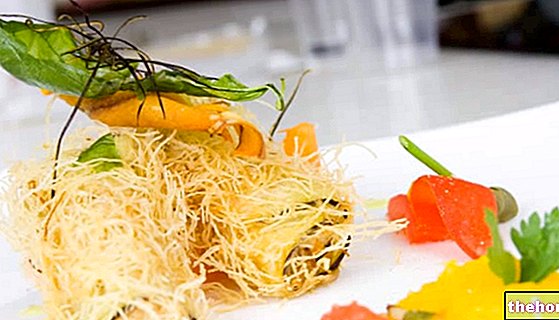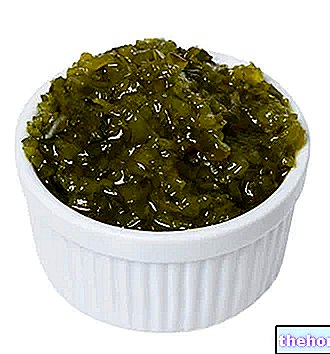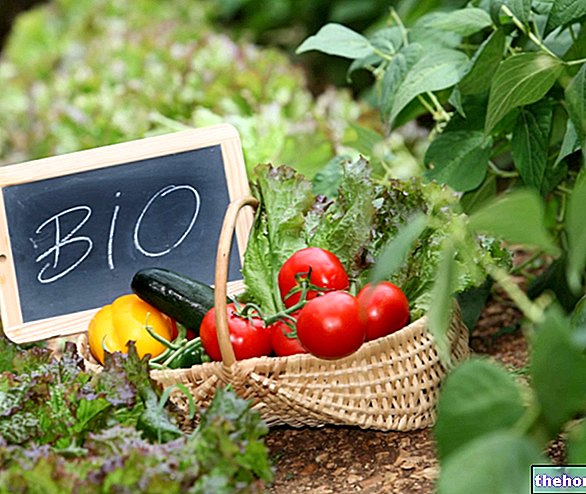Generality
By omelette we mean a culinary preparation based on whole eggs, beaten and cooked in a pan (sautéed). It is NOT a simple omelette folded or rolled on itself, but a preparation having an extremely characteristic shape and consistency (different between the outside and the heart of the food).

The nutritional intake of the omelette is quite variable depending on the formulation; in practice, the omelette can be composed of: eggs, ingredients of animal origin, vegetables and seasoning fats. Even the digestibility varies greatly from one preparation to another, although (on average) this cooking method is considered among the best .
Perfect Cheese Omelette
Problems with playing the video? Reload the video from youtube.
- Go to the Video Page
- Go to the Video Recipes Section
- Watch the video on youtube
Omelette Technique and Tips
Omelette is one of those preparations that cannot be explained without an appropriate practical demonstration. Fortunately, on the net there are numerous tutorials that illustrate the various cooking of eggs and, among these, the omelette (as well as poached eggs, poché and bazzotte) is certainly one of the most popular.
First of all, an omelette is composed of about 2.5 / 3 medium eggs (60g l "one) to be cooked in a sauté with a diameter of approximately 20cm; increasing the quantity of eggs, of course, it is also necessary to increase the size of the pan or divide the compound in more omelets.
The eggs must always be used whole, beaten, salted and peppered and enriched with the respective ingredients. It is very important to remember that omelette cooking is FAST cooking, which does NOT totally penetrate the "heart" of the food and allows it to be kept soft and / or partially raw; this clarification is essential for evaluating the appropriateness of a pre -cooking of secondary ingredients. Let me explain: the so-called "appearil" (ie the basic liquid compound) is made up of whole eggs, salt, pepper, grated cheese and / or cream (the last two at the discretion of the cook), which need the same times of cooking. On the other hand, wanting to use other ingredients such as: vegetables, tubers, mushrooms, fresh meats or julienne crispy salami, it is necessary to differentiate their heat treatment by means of a preliminary cooking. If the omelette contains potatoes, they will have to be peeled, cut and boiled; the same goes for certain vegetables such as asparagus and broccoli. Other vegetables, such as mushrooms, meats and salami julienne, need to be simply peeled. cut and sautéed. Only at this point, the secondary ingredients are ready to be combined with the "appearil" of the omelette.
Another important clarification concerns the choice of cheese and / or cream to add to the mixture. First of all, the presence of grated cheese requires particular attention to cooking; we have already said that omelettes should not be cooked to the core and this assumes an even more important role in the event that large quantities of this ingredient are used. This is due to the fact that, when exposed to an EXCESSIVE heat source (such as the surface of the hot pan), the cheese totally changes its flavor. This may not necessarily be unpleasant, but from a technical point of view it is certainly a mistake. At this point, the presence or absence of cream comes into play. This, as we know, always contributes to guaranteeing a certain "softness" of food. In the omelette, the cream has a triple function: it prevents the cheese from cooking, allows a superior heat treatment while preserving the soft consistency of the food and prevents the omelette from sticking to the pan. Personally, I believe that you can HOWEVER do without it!
Last but not least, the omelette "training" technique.

Nutritional values (per 100 g of edible portion)
It is essential that this does not adhere to the sauté, which is why (especially if you do not use cream) are very important: the quality of the pan and the right amount of fat on the surface of the tool. First of all, grease the sauté (traditionally with butter, but you can also use lard, ham fat or extra virgin olive oil) and heat it over a high flame without exceeding the lipid smoke point. pour the appearil (which immediately tends to coagulate as if it were an omelette). Then, with the help of a silicone spatula or a small licker, beat the mixture by detaching the congealed egg from the surface of the pan (similar to "scrambled eggs"). When the appearil is coagulated BUT still WET (similar to pureed ricotta), group it with the spatula towards the front end of the pan and tilt it about 40-45 °. In this way, ONLY the edge that houses the appearil will be exposed to the flame, starting to cook the omelette on the first of the two sides. Now, applying a few taps on the handle of the pan (firmly held), the omelette should jump (indicating perfect anti-adhesion) and advance further; once it has reached the absolute top, with a decisive movement, skip the omelette (that is, turn it on itself) and continue cooking until the right moment. The omelette has thus acquired the classic fusiform and slightly flattened shape.
Nutritional Characteristics
The nutritional intake of the omelette varies greatly depending on the presence or absence of cream, the amount of fat used in cooking and the type of secondary ingredients in the appearil.
In the article the chemical translation of a parmesan omelette with cream and butter was reported. It is evident that the use or not of certain ingredients significantly affects the nutritional balance; without cream and halving the butter, this omelette would have provided almost 10g of lipids less (corresponding to 35% of the total energy intake). Moreover, animal fats are rich in saturated fatty acids which, in association with the cholesterol of the egg yolk, contribute to making omelettes an extremely CONTRAINDICATED food in case of hypercholesterolemia. Moreover, this type of omelette is rather caloric and not lends itself to nutrition against overweight
On the other hand, omelettes are also to be considered highly nutritious foods, as they contain excellent concentrations of iron, vitamin B2 (riboflavin), carotenoids (pro-vitamin A) and tocopherols (vitamin E).
The omelette should NOT be consumed in portions greater than 180-200g and, even then, no more than once a week.




























